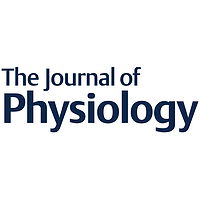Key pointsGait-related arm swing in humans supports efficient lower limb muscle activation, indicating a neural coupling between the upper and lower limbs during gait.Intermuscular coherence analyses of gait-related electromyography from upper and lower limbs in 20 healthy participants identified significant coherence in alpha and beta/gamma bands indicating that upper and lower limbs share common subcortical and cortical drivers that coordinate the rhythmic four-limb gait pattern.Additional directed connectivity analyses revealed that upper limb muscles drive and shape lower limb muscle activity during gait via subcortical and cortical pathways and to a lesser extent vice versa.The results provide a neural underpinning that arm swing may serve as an effective rehabilitation therapy concerning impaired gait in neurological diseases.Human gait benefits from arm swing, as it enhances efficient lower limb muscle activation in healthy participants as well as patients suffering from neurological impairment. The underlying neuronal mechanisms of such coupling between upper and lower limbs remain poorly understood. The aim of the present study was to examine this coupling by intermuscular coherence analysis during gait. Additionally, directed connectivity analysis of this coupling enabled assessment of whether gait-related arm swing indeed drives lower limb muscles. To that end, electromyography recordings were obtained from four lower limb muscles and two upper limb muscles bilaterally, during gait, of 20 healthy participants (mean (SD) age 67 (6.8) years). Intermuscular coherence analysis revealed functional coupling between upper and lower limb muscles in the alpha and beta/gamma band during muscle specific periods of the gait cycle. These effects in the alpha and beta/gamma bands indicate involvement of subcortical and cortical sources, respectively, that commonly drive the rhythmic four-limb gait pattern in an efficiently coordinated fashion. Directed connectivity analysis revealed that upper limb muscles drive and shape lower limb muscle activity during gait via subcortical and cortical pathways and to a lesser extent vice versa. This indicates that gait-related arm swing reflects the recruitment of neuronal support for optimizing the cyclic movement pattern of the lower limbs. These findings thus provide a neural underpinning for arm swing to potentially serve as an effective rehabilitation therapy concerning impaired gait in neurological diseases.

Intermuscular coherence analysis in older adults reveals that gait-related arm swing drives lower limb muscles via subcortical and cortical pathways
Review badges
0 pre-pub reviews
0 post-pub reviews
